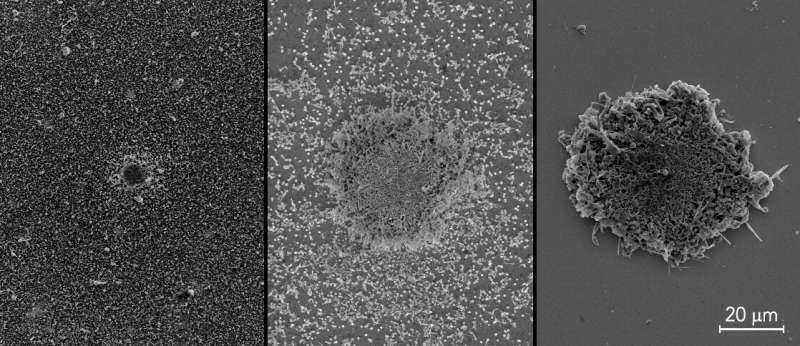Probing battery hotspots for safer energy storage

Researchers are striving to make tomorrow's batteries charge faster and store more energy. But these conveniences come with safety challenges, like more heat produced in a battery. For the first time, a team of researchers has studied the effects of tiny areas within lithium metal batteries that are much hotter than their surroundings. These hotspots, the researchers find, can make batteries grow spiky tumors of metal called dendrites that could cause short circuits, and potentially lead to fires.
The team of researchers, from Stanford University and the Department of Energy's SLAC National Accelerator Laboratory, published their findings May 6 in Nature Communications.
By shining lasers onto the batteries, the team created microscopic temperature hotspots on electrodes. When they looked at the electrodes with a scanning electron microscope, they saw that lithium metal inside the batteries piled up on hotspots much faster than on other areas of the electrodes. If they grow long enough, these dendrites could puncture the barriers that separate positive and negative sides of batteries, causing short circuits. Short circuits like these can cause runaway temperatures that might explain why some batteries explode or catch on fire.
The team hopes that their work will inspire other researchers to study batteries using this technique. It will be important to create ways to better manage batteries' temperatures, they say, in the quest for higher energy and safer batteries.
More information: Yangying Zhu et al. Fast lithium growth and short circuit induced by localized-temperature hotspots in lithium batteries, Nature Communications (2019). DOI: 10.1038/s41467-019-09924-1
Journal information: Nature Communications
Provided by SLAC National Accelerator Laboratory





















